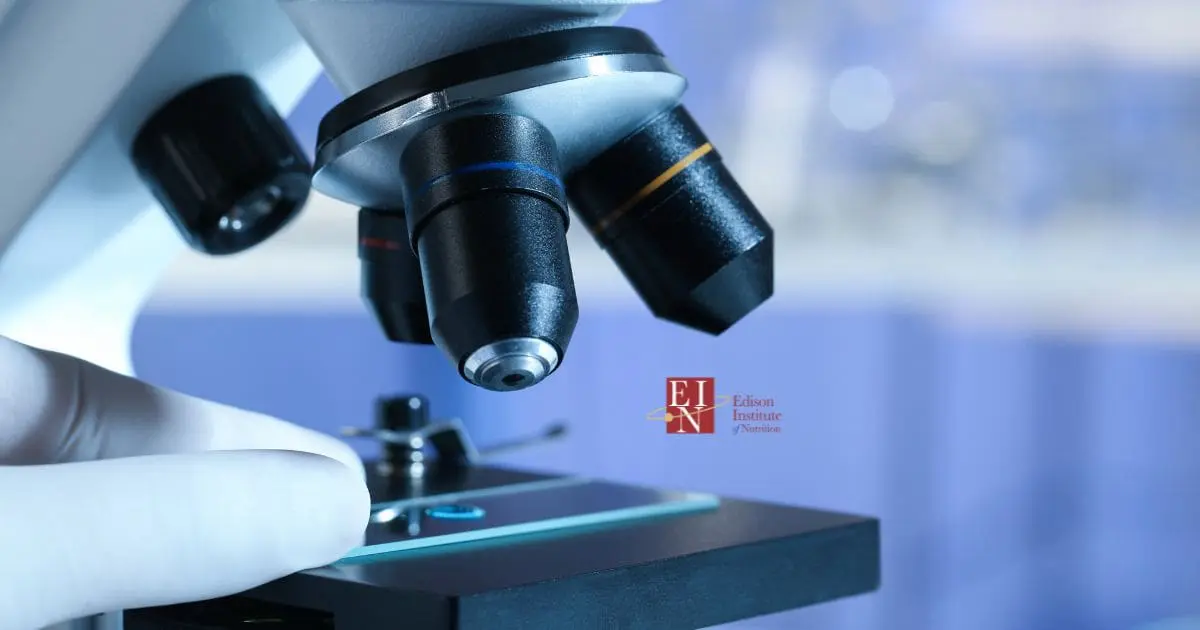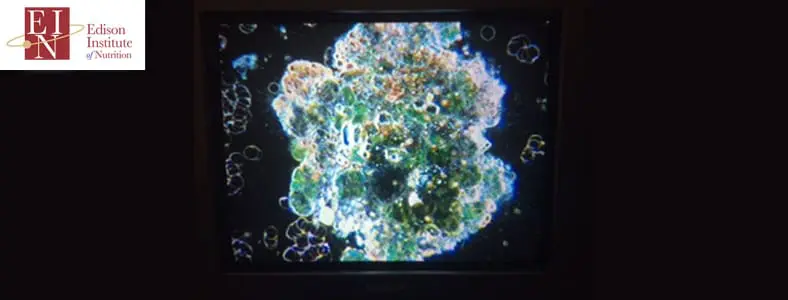
As a nutritionist, you want to keep up to date with the tools and techniques used to help provide accurate and complete assessments for your clients.
LCM allows you to provide the best possible services to your clients, and helps you keep on top of innovations in your field.
Adding a live blood cell microscopy analysis training course to your repertoire will allow you to offer your clients a deeper look at the root causes of issues they may be experiencing.
If you’re looking for more information on how to become a nutritionist in Canada, or if you’re already a certified nutritionist and are looking to get training in more areas, such as live cell microscopy, the Edison Institute of Nutrition can help.
Keep reading to learn more about this technique, and what it is used for.
What Is Live Cell Microscopy?
Live cell microscopy, or live cell imaging is a procedure used for analyzing the function and structure of cells.
The blood is magnified up to one thousand times under a microscope, allowing you to notice things which may not be caught on traditional blood tests.
Although live cell microscopy by itself can’t show disease, it can show abnormalities and imbalances which may be the result of disease and can be used to indicate if further testing may be required.
What Are The Benefits Of Live Cell Microscopy?
There are a number of benefits to observing live cells, some of which include:
- Generation of data which can’t be obtained through other methods
- Allows for the observation of events as they unfold
- Limits the presence of artifacts present with other techniques for imaging, which could distort the image
- Ability to observe and study cells in their natural state
- Ability to study cell growth and progression in real time
- Participation of the client in their own healing process
How Does Live Cell Microscopy Work?
During live cell microscopy, a single drop of blood is analyzed under a microscope, and magnified up to 1000 times.
Cells are observed on a monitor, and this technique allows you to see things which may be missed by other forms of blood tests.
Use Cases For Live Cell Microscopy
You may be wondering how you would use live cell microscopy in your practice.
Let’s have a look at some of the use cases for this technique.
1. To Spot Free Radical Damage
Free radicals are molecules, which left unchecked can cause problems.
Antioxidants, however, will neutralize these free radicals.
Vitamin A, vitamin C, vitamin E, copper, zinc, selenium, glutathione, beta carotene, and a number of other nutrients have antioxidant properties.
Now, your body does need some free radicals to help fight pathogens and prevent disease.
However, if you have an imbalance between free radicals and antioxidants, it can cause oxidative stress, which in turn can lead to things like generalized anxiety disorders, damaged skin, eye issues, joint issues, diabetes, cancer, Alzheimer’s, and more.
Read more: certified holistic cancer practitioner course
Using live cell microscopy to spotoxidative stress caused by free radicals can help you to offer solutions to your clients to limit further damage.
2. To Detect Nutrient Deficiencies
Live cell microscopy can help you to identify if your client is lacking in certain nutrients.
Specifically, it can help you find deficiencies in protein, essential fatty acids, folic acid, vitamin B12, iron, and other minerals.
3. To Detect Uric Acid Crystals
Uric acid crystals form when levels of uric acid in your blood are too high and can lead to joint pain and kidney damage.
These crystals are produced as a byproduct of the body breaking down purines found in foods such as seafood, red meat, and alcoholic beverages.
Build up of uric acid in your joints can lead to gout, and crystals in the kidneys can lead to kidney stones.
Using live cell microscopy can help detect these crystals before they become an issue.
4. To Detect Digestive Disorders
If your client is experiencing digestive problems, live cell microscopy many be able to help determine the reason for it.
It can be used to find enzyme deficiencies which can lead to gut issues.
5. To Detect Heavy Metal Toxicity
Heavy metal toxicity occurs when the body is exposed to high levels of metals such as mercury, lead, and arsenic.
Exposure may be from diet, tap water, the environment, or medications and high levels of heavy metals can affect how the body functions.
Live cell microscopy can be used to help detect the presence of heavy metals in the blood.

Live Cell Microscopy Analysis Training at Edison Institute of Nutrition
If you are a naturopath, holistic nutritionist, or other health professional looking to learn how to use live cell microscopy as a tool in your practice, you’re in the right place.
With our course, you will learn:
- Methods for interpreting blood samples
- The role our blood plays in overall health
- Methods for taking blood samples
- Microscope operation
- How to use your findings to make recommendations for your clients
The training in live cell microscopy offered at the Edison Institute of Nutrition offers hands on training and an exhaustive overview of the technique and how to interpret the results.
If you’re ready to learn how to use live cell microscopy, it’s time to…
Contact Edison Institute of Nutrition Today
Are you ready to add live cell microscopy to your toolbox as a healthcare provider?
Or do you need a little more information before you are ready to commit to a course?
Whatever the answer, contact us at Edison Institute of Nutrition today, for more information about upcoming courses.
